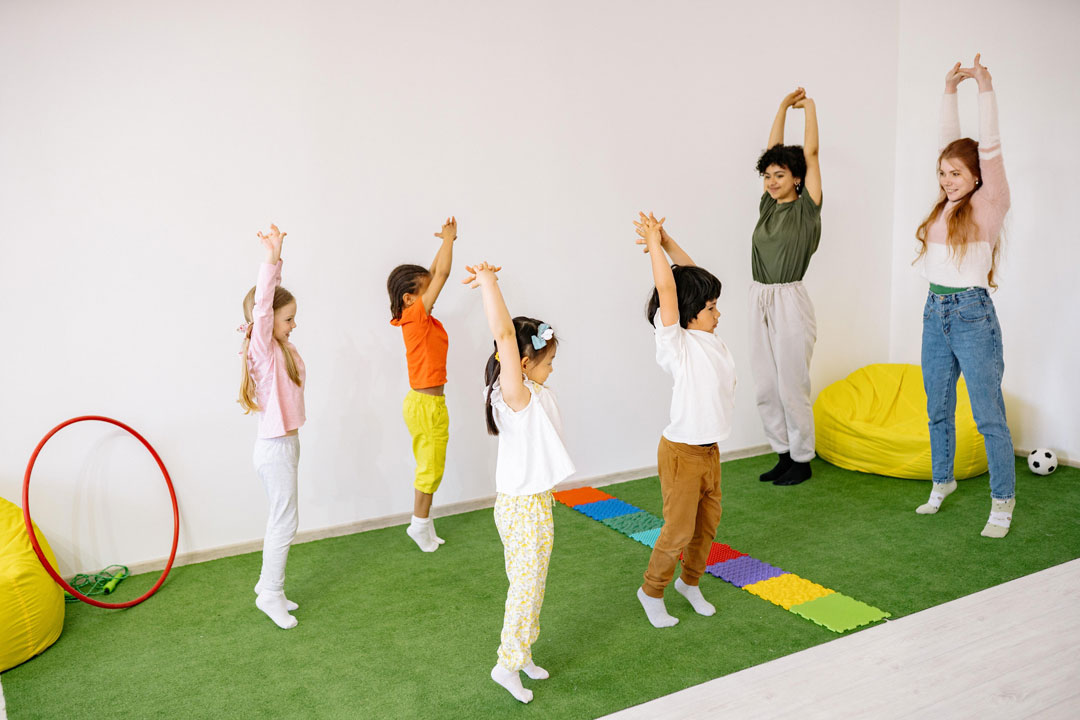ADHD & Attention Deficits, Autism
Exercise and Brain Health for Kids: Keep Your Mind Sharp and Have Fun!
Did you know that exercise is beneficial to your brain as well as your body? Yes, regular physical activity can aid to improve cognitive function, memory, and mood. And the best part is that there are many enjoyable methods to get your children moving and exercising their minds.
In this article, we’ll look at the relationship between exercise and brain health in children. We’ll also offer three great exercises you can do with your kids to keep their minds sharp while also having fun.
Exercise can help your child’s brain health in a variety of ways. Exercising, for example, can:
- Increase blood flow to the brain: When your child exercises, their heart rate increases and their blood vessels dilate. This allows more blood to flow to the brain, which helps to deliver oxygen and nutrients to the brain cells. This is important for brain health because it helps to keep the brain cells functioning properly.
- Promote the growth of new brain cells: Exercise has been shown to promote the growth of new brain cells in the hippocampus, a part of the brain that is important for learning and memory. This is why exercise is often recommended for people who are trying to improve their memory or cognitive function.
- Improve the connections between brain cells: Exercise also helps to improve the connections between brain cells. This is important for brain function because it allows the brain cells to communicate more effectively with each other. This can lead to improvements in things like attention, focus, and problem-solving skills.
- Reduce inflammation in the brain: Inflammation is a major risk factor for a number of chronic diseases, including Alzheimer’s disease and dementia. Exercise has been shown to reduce inflammation in the brain, which can help to protect against these diseases.
- Improve mood and reduce stress: Exercise is a great way to improve mood and reduce stress. This is because exercise releases endorphins, which have mood-boosting effects. Exercise can also help to reduce stress by providing a distraction and by helping people to better manage their emotions.
Here are three great exercises that you can do with your kids to keep their minds sharp:

Brain breaks: Are specific types of movement exercises sequences that engage students’ bodies and brains to improve concentration and attention in the classroom. Brain breaks have been shown to reduce fidgeting, improve focus, offer a break for emotional & sensory regulation, and make learning more efficient. Read here about the eight essential elements of effective Brain Breaks. CoordiKids Home Course and CoordiKids Classroom Course are great examples of Brain Break activities.
Stretching: Stretching is a great way to improve flexibility and range of motion. It can also help to reduce stress and improve mood.

Games: The Simon Says Game is a great way to improve focus, concentration, and memory. It can also be a lot of fun!
The Simon Says Game is a classic game that is perfect for kids of all ages. The game requires players to listen carefully to instructions and follow them quickly. This can help to improve focus and concentration, which are often areas of difficulty for kids. For more games to play read our blog
5 great activities for kids with ADHD.

Exercise is a great way to improve your child’s overall health and well-being. It’s also a great way to keep their brain sharp. So, get moving and start reaping the benefits of exercise for your child’s brain health!
If you’re looking for more ways to improve your child’s brain health, check out the CoordiKids Classroom Brain Breaks Course or the CoordiKids Home Course. These courses offer a variety of fun and engaging activities that can help to keep your child’s mind sharp.
Children with ADHD and autism often have difficulty engaging in physical activity. They may find it boring, difficult to follow instructions, or feel self-conscious about their bodies. Video-based exercises can be a great way to overcome these challenges and get kids moving.
Video-based exercises are typically short, engaging, and interactive. They can be tailored to the specific needs of children with ADHD and autism, and they can be done in the comfort of your own home. This can make them more appealing to kids who are typically reluctant to exercise.
Video-based exercises can also help to improve focus and concentration. When kids are engaged in a video game or interactive exercise, they are more likely to stay focused on the task at hand. This can help to improve their attention span and make them more likely to participate in physical activity.
In addition, video-based exercises can help to improve social skills. When kids work together to complete an exercise, they learn to cooperate and communicate with each other. This can help to improve their social skills and make them more likely to participate in physical activity with other people.
Overall, video-based exercises can be a great way to improve the physical and social health of children with ADHD and autism. They are engaging, effective, and easy to use. If you are looking for a way to get your child moving, video-based exercises are a great option.
Are you still wondering about online exercises? Just read about the positive Impact of Video-Based Exercises on Children with ADHD and Autism: Enhanced Engagement and Participation